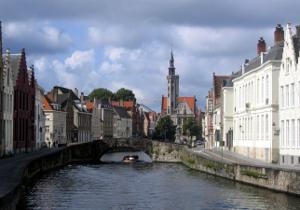OIL OF SPIKE LAVENDER AND “VENICE OF THE NORTH”
Bruges, in the Flemish region of Belgium, is sometimes called the “Venice of the North”. During the 1400s, it was home to such famous painters as Jan van Eyck, Geerard David, Roger van der Weyden and Hans Memling. This is the period when oil painting took over from egg tempera. Artists discovered that oil paint has a translucent quality that allowed for unprecedented effects, such as when showing light beams, shadows, jewelry, mirrors, and fabric. Fine lines and glazing reached a new level of proficiency during this time.
The Bruges painters used Oil of Spike Lavender as part of their mix, combined with the thicker linseed oil or walnut oil. If you have ever seen their work up close you can guess why. There is fine detail combined with emotional intensity. Internet photos of these artists’ work do not do justice to the originals. Viewing web images, we may tend to assume they are large paintings, but in reality many of them are smaller triptychs, altarpieces, or shrines. Memling’s Shrine of St. Ursula is only 35.82 inches long. But it looks much larger online. Highly detailed historical events are depicted in each of the small side panels, with ships, tents, cathedrals, soldiers and maidens. All of this is in addition to the carved golden gothic architecture of the shrine.
Usually, there are works by Memling and other painters from the 1400s at the Art Institute in Chicago, and at the Metropolitan Museum of Art in New York City. There is much to be learned from “Venice of the North” painters: their methods and materials, as well as their techniques.




